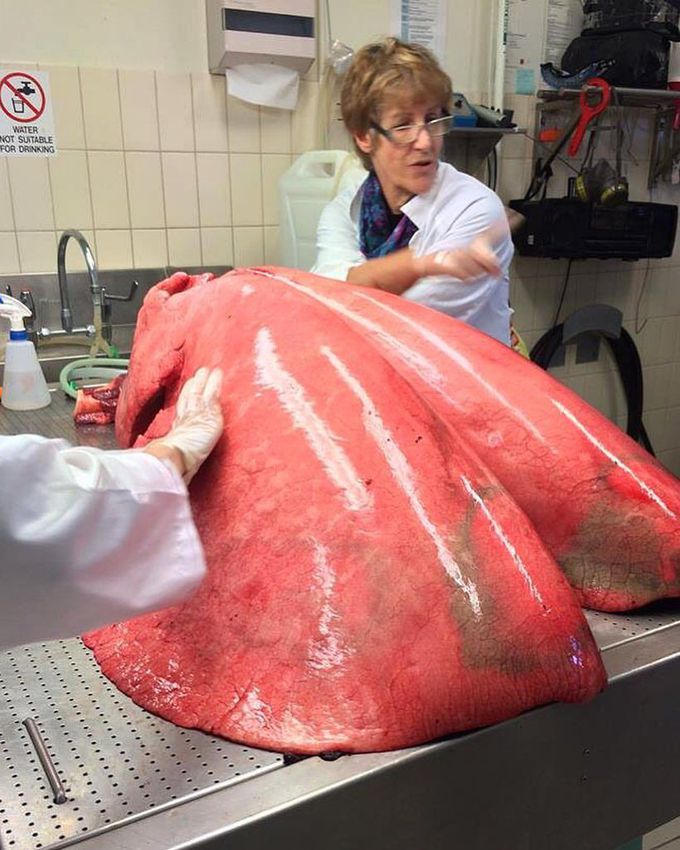


Fully inflated horse lungs!!
If interest is raised, we’ll post a video next. 👇🏽 Let us use these beautiful set of lungs to discuss an important characteristic of lungs - their elasticity! These pair of lungs get inflated like a balloon, they fill the complete expanse of the thoracic cavity thanks to the elastic properties of the alveoli. An elastic material is one that tends to return to its initial state after the removal of a deforming force. Elastic tissues behave like springs. As the lungs are inflated, there is an accompanying increase in the energy stored within the elastic tissues of the lungs, just as energy is stored in a stretched rubber band. The conversion of this stored, or potential, energy into kinetic, or active, energy during the deflation process supplies part of the force needed for the expulsion of gases. A portion of the energy put into expansion is thus recovered during deflation. Muscular effort supplies the motive power for expanding the lungs, and this is translated into the pressure required to produce lung inflation. It must be great enough to overcome (1) the elasticity of the lung and its surface lining; (2) the frictional resistance of the lungs; (3) the elasticity of the thorax or thoraco-abdominal cavity; (4) frictional resistance in the body-wall structures; (5) resistance inherent in the contracting muscles; and (6) the airway resistance. The laboured breathing of the asthmatic is an example of the added muscular effort necessary to achieve adequate lung inflation when airway resistance is high, owing to narrowing of the tubes of the airways. One remarkable phenomena in respiration is the role of the fluid coating the walls of the alveoli of the lungs. This fluid, called pulmonary surfactant is a complex substance composed of lipids and proteins which is secreted into the alveolar space by epithelial type II cells. The main function of surfactant is to lower the surface tension at the air/liquid interface within the alveoli of the lung. This is needed to lower the work of breathing and to prevent alveolar collapse at end-expiration.
Hemodynamic stimuli&nonhemodynamic stimuliEffects of sugar on teeth

